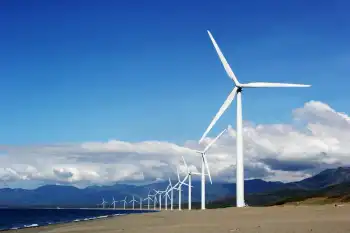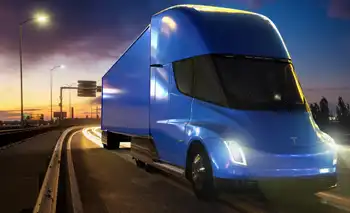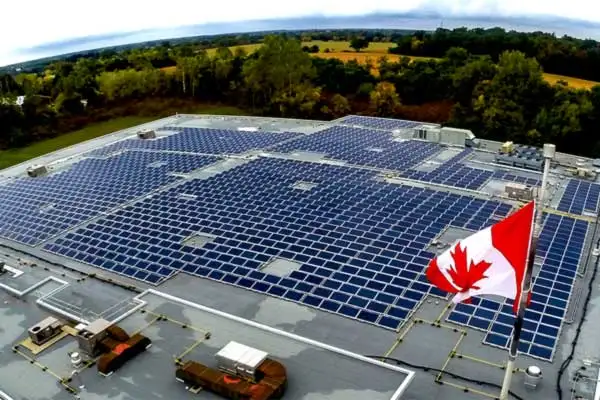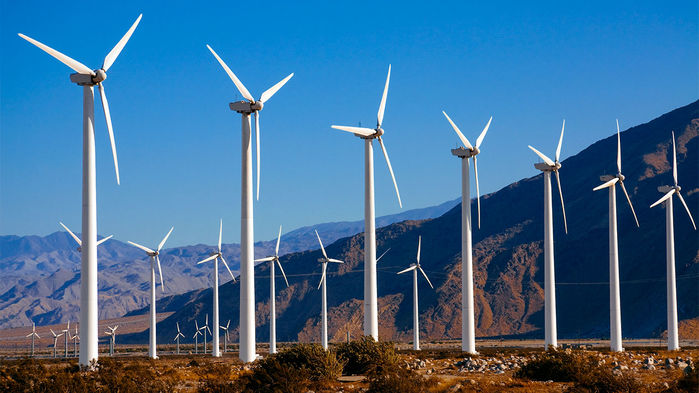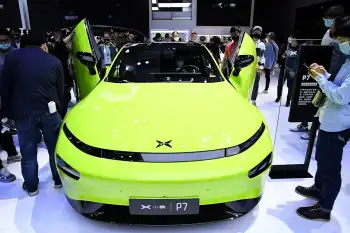Unprecedented Growth in Solar and Storage Anticipated with Record Installations and Investments

NFPA 70e Training - Arc Flash
Our customized live online or in‑person group training can be delivered to your staff at your location.

- Live Online
- 6 hours Instructor-led
- Group Training Available
U.S. Clean Energy Transition accelerates with IRA and BIL, boosting renewable energy, solar PV, battery storage, EV adoption, manufacturing, grid resilience, and jobs while targeting carbon-free electricity by 2035 and net-zero emissions by 2050.
Key Points
U.S. shift to renewables under IRA and BIL scales solar, storage, and EVs toward carbon-free power by 2035.
✅ Renewables reached ~22% of U.S. electricity generation in 2022.
✅ Nearly $13b in PV manufacturing; 94 plants; 25k jobs announced.
✅ Battery storage grew from 3% in 2017 to 36% by H1 2023.
In recent years, the United States has made remarkable strides in embracing renewable energy, with notable solar and wind growth helping to position itself for a more sustainable future. This transition has been driven by a combination of factors, including environmental concerns, economic opportunities, and technological advancements.
With the introduction of the Inflation Reduction Act (IRA) and the Bipartisan Infrastructure Law (BIL), the United States is rapidly advancing its journey towards clean energy solutions.
To underscore the extent of this progress, consider the following vital statistics: In 2022, renewable energy sources (including hydroelectric power) accounted for approximately 22% of the nation's electricity generation, and renewables surpassed coal in the mix that year, while the share of renewables in total electricity generation capacity had risen to around 30% and the nation is moving toward 30% electricity from wind and solar as well.
Notably, in the transportation sector, consumers are increasingly embracing zero-emission fuels, such as electric vehicles. In 2022, battery electric vehicles (BEVs) represented 5.6% of new vehicle registrations, surging to 7.1% by the first half of 2023, according to estimates from EUPD Research.
The United States has set ambitious targets, including achieving 100% carbon pollution-free electricity by 2035 and aiming for economy-wide net-zero greenhouse gas emissions by no later than 2050, and policy proposals such as Biden's solar plan reinforce these goals for the power sector. These targets are poised to provide a significant boost to the clean energy sector in the country, reaffirming its commitment to a sustainable and environmentally responsible future.
IRA and BIL: Catalysts for Growth
The IRA and BIL represent a transformative shift in the landscape of clean energy policy, heralding a new era for the solar and energy storage sectors in the United States. The IRA allocates substantial resources to address the climate crisis, fortify domestic clean energy production, and solidify the U.S. as a global leader in clean energy manufacturing.
According to the U.S. Department of Energy (DOE), an impressive investment exceeding $120 billion has been announced for the U.S. battery manufacturing and supply chain sector since the introduction of IRA and BIL. Additionally, plans have been unveiled for over 200 new or expanded facilities dedicated to minerals, materials processing, and manufacturing. This move is expected to create more than 75,000 potential job opportunities, strengthening the nation's workforce.
Following the introduction of IRA and BIL, solar photovoltaic (PV) manufacturing in the U.S. has also witnessed a substantial surge in planned investments, totaling nearly $13 billion, as reported by the DOE. Furthermore, a total of 94 new and expanded PV manufacturing plants have been announced, potentially generating over 25,000 jobs in the country.
Booming Solar Sector
In recent years, the U.S. solar sector has outpaced other energy sources, including a surging wind sector and natural gas, in terms of capacity growth. EUPD Research estimates reveal a notable upward trend in the contribution of solar capacity to annual power capacity additions, as 82% of the 2023 pipeline consists of wind, solar, and batteries across utility-scale projects. This trajectory has risen from 37% in 2019 to 38% in 2020, further increasing to 44% in 2021 and an impressive 45% in 2022.
Although the country experienced a temporary setback in 2022 due to pandemic-related delays, trade law enforcement, supply chain disruptions, and rising costs, it is now on track to make a historic addition to its PV capacity in 2023. According to EUPD Research's 2023 forecast, the U.S. is poised to achieve its largest-ever expansion in PV capacity, estimated at 32 to 35 GWdc, assuming the installation of all planned utility-scale capacity, and solar generation rose 25% in 2022 as a supportive indicator. Additionally, from 2023 to 2028, the U.S. is projected to add approximately 233 GWdc of PV capacity.
In terms of cumulative installed PV capacity (including utility-scale, commercial and industrial, and residential) on a state-by-state basis, California holds the top position, followed by Texas, Florida, North Carolina, and Arizona. Remarkably, Texas is rapidly expanding its utility-scale PV capacity and may potentially surpass California in the next two years.
Rapid Growth in Battery Storage
Battery energy storage has emerged as the dominant and rapidly expanding source of energy storage in the U.S. in recent years. The proportion of battery storage in the country's energy storage capacity has surged dramatically, increasing from a mere 3% in 2017 to a substantial 36% in the first half of 2023.





